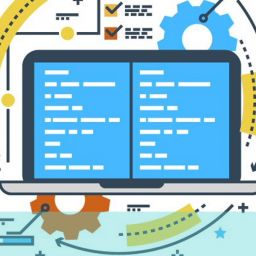
Everyone’s heard the phrase “little and often.”
Many will automatically link it to a simple diet methodology: eating smaller amounts regularly to satisfy hunger and avoid overwhelming our bodies with fuel they don’t need.
Similarly, we can acquire just as healthy results in UX research by cutting out the bulk and stodge associated with more traditional research programs and offering a fast and frequent methodology that delivers regular results from real user insights. Such a program might allow us to be flexible, react to user feedback in real time, and not overwhelm stakeholders and teams with too much information, often in the form of a vast report nobody wants to read.
Welcome to rolling research—a lightweight process run on a regular schedule, applying iterative research from basic methods.
What’s the difference between a rolling research program and traditional UX research sessions?
A rolling research program takes elements of traditional UX research and applies them to a strictly scheduled and organised delivery that is repeatable, adaptable, and easy to consume.
We’ve recently been exploring a selection of new UX methodologies, each based around faster, more frequent studies. While they all demand constant, recurring schedules and templated documentation to increase delivery and reporting efficiency, rolling research is typically the evaluative option of our selection, ideal for supporting fast product development. While it can be used as a generative tool, it works best when delivering usability improvements.
Rolling research definition:
Rolling research is a continuous and iterative approach to data collection and analysis. Unlike traditional research methods that follow a fixed plan, rolling research adapts to new information as it comes to light.
This means that research objectives, questions, and methods can evolve during the study. By constantly updating the research focus, rolling research ensures that findings remain relevant and actionable. It also allows researchers to test hypotheses in real time and refine them on the go, which can lead to a more nuanced and in-depth understanding of the subject matter.
Why, suddenly, do we need rolling research?
Although it’s a fairly new methodology, rolling research hasn’t come out of nowhere.
Given the fast-paced advances of technology and how they affect users’ needs and expectations, UX researchers and product teams need to keep up with such regular fluctuations so as not to get left behind. Imagine if you only reported last week’s news while your competitors covered the last hour’s actions. You’d be out of business in a week. A rolling research program can navigate the latest updates via weekly (or bi-weekly) testing and adapt to the latest consumer and marketing trends as they happen.
Agile research sprints allowed us to see how speed and efficiency could change how we deliver essential research findings. Rolling research takes things further by applying a regular stripped-out, formulated schedule based on defined goals across a theme, being able to adjust and adapt to each set of new findings. Rolling research staves off long-winded, overwhelming studies where quick-fire, bite-size projects can be just as effective, if not more so.
The basic principles and key components of rolling research
These four principles outline the rolling research process nicely:
- Continuous engagement
- Adaptability
- Incremental delivery
- Collaboration
As you conduct rolling research and get used to your operation’s new fast flow, you’ll soon see how beneficial it can be to your research programs, products, and organisation. Relationships develop and deepen, delivery happens far more regularly, and you’ll feel constantly engaged with your users and your product.
In much the same way, the key components are the glue that keeps everyone on track, connected, and working continually towards the best possible outcomes:
- Iterative research cycle – Plan, execute, observe, and refine
- Real-time data collection from which the latest insights emerge
- Flexibility and stability in the research design process
- Engagement and ongoing communication with researchers, participants, and stakeholders
So, what does a rolling research program look like?
Typically, a rolling research program has a regular cadence, a defined theme, and something to test or fix. With such a short, sharp system, managing your expectations is crucial. You can’t ask everything in a few stripped-back interviews or observations, and you won’t always find the answers to every issue, so it’s worth remembering to focus on what’s important and keep that up front and centre.
Evaluate the research project
As exciting as rolling research is, it isn’t ideal for every project. While you may find ways to adapt a rolling research session to alternative needs, it lends itself best to evaluative and formative processes for the best results.
There will undoubtedly be no shortage of research requests, so the direction of your studies may require regular consideration by the research manager and stakeholders. If your organisation has enough resources, multiple teams can run multiple tests, and all the insights gained can be combined and applied to the next round.
Decide on your cadence and lock down a schedule
Whether you run weekly or fortnightly programs, they must be short to adapt to the latest changes, findings, or trends. Anything longer will start to resemble traditional user research.
Your rolling research schedule needs to be precise. It should follow the same format and use the same basic methods at the same time each week. With a predetermined schedule, operators, participants, and stakeholders automatically know what to expect and when, your research team knows when the deadlines are and why they’re so important, and your steady stream of user insights continues to flow.
Create templates that support the plan
Working with templates streamlines the system to make conducting every stage more effective for the people involved.
As with any fast and efficient research process, the tools that keep everything simple and easy to apply make it efficient at every step. With that, the best rolling research programs lean heavily on using templates for everything, from scripts at every stage to research questions, recruitment, testing, reporting, and more.
The best templates—just like your research session questions—are clear, simple, and relevant. Simplify everything you can to make asking and answering questions and compiling and delivering reports as easy as possible to get the results you need.
Carry out the research sessions
Consider using one method for all your rolling UX research sessions to keep things simple and unified. Participants and researchers will settle into sessions quicker when they have a feel for what to expect. Similarly, researchers and observers will be better equipped to record and synthesize the results, and it’s easier for your designers to create templates that follow the format.
Analyse the data and present your findings
Recording your findings in a simple format should make them easier to analyse. Following that theme, reports should also make it as easy as possible for stakeholders and different teams to understand the latest insights.
A single-page report highlighting the main findings or a simple presentation to stakeholders and product managers is all you need. Those insights will significantly shape the content and research questions of your upcoming rolling UX research sessions.
Repeat
Rolling UX research demands a continuous flow of research sessions. How you choose to repeat them is down to you and your teams. Because of its fast-flowing process, burnout can be a very real issue within your teams. Your schedule might allow for three weeks of the month for rolling research, with a week to regroup and allow your researchers to reset before another batch of sessions. If you have the resources, allowing teams to work for a week or month on with a week or month off is another option.
The advantages and disadvantages of rolling research
Advantages of rolling research:
- Lightweight and streamlined
- Easy to deliver structure
- Deals with current trends and issues
- Adapts to the latest insights
- Creates collaboration and brings teams together
Disadvantages of rolling research:
- Requires a constant level of enthusiasm, and its fast pace can cause burnout
- While topics are easily adaptable, they might not be so adaptable when it comes to methods and major themes
- Regular recruitment can be challenging
- Lighter documentation doesn’t provide the deeper dive into results traditional projects cater to
- Far smaller subject pools (typically between 3 to 5 in one session) than large format projects
Summary
Rolling research is a positive movement towards a new, fitter, and faster UX research methodology. It’s dynamic and exciting yet adheres to set expectations and formats, making it easy for your teams, managers, stakeholders, and users to understand and adapt to, becoming useful, if not essential, parts of the process.
Apart from its value in uncovering fresh insights from real users, it’s a great opportunity to involve more people in the UX of your product in bite-size blocks they can manage, uncovering and adapting issues in real time and getting incredible and immediate value from your resources.
Our user research experts are available to help you get closer to your customers. If you would like to arrange a no obligation call, get in touch by emailing us at hello@ux247.com or share your requirement using the form below.





